Strategies for Enhancing the Thermal Environment of Street Spaces in Ancient Canal Towns Based on the Design of Water-Friendly Spatial Diversity
Abstract
1. Introduction
2. Research Methodology
2.1. Data Collection
2.2. Simulation Software Selection
2.3. Field Test
3. Result
3.1. Changes in the Size of Waterside Space
- Case 1: Waterside space width 1 m;
- Case 2: Waterside space width 2 m;
- Case 3: Waterside space width 3 m;
- Case 4: Waterside space width 4 m.
3.2. Impact of Waterside Space Distribution Design
- Case 5: Three waterside passages, each 2 m wide;
- Case 6: Two waterside passages, each 3 m wide;
- Case 7: One waterside plaza, 6 m wide.
3.3. Design of Ventilation and Shading for Waterside Spaces
- Case 8: Waterside platform facing the ventilation corridor;
- Case 9: Waterside platform not facing the ventilation corridor.
4. Discussion
4.1. Effects of Changes in Waterside Space Dimensions
4.2. Impact of Changes in Waterside Space Location
4.3. Impact of Ventilation and Shading Design in Waterside Spaces
5. Conclusions
Author Contributions
Funding
Institutional Review Board Statement
Informed Consent Statement
Data Availability Statement
Conflicts of Interest
References
- Botao, Q.; Iskandar, Y.H.P. Tourism Augmented Reality in China. In Proceedings of the Proceeding National & International Conference, Dalian, China, 28–29 February 2024; Volume 16, pp. 247–255. [Google Scholar]
- Jin, W.; Fukuda, H. Changes of the Northern Zhejiang Canal: Renaissance and Cultural Tourism Development of Ancient Towns. Sustainability 2024, 16, 5464. [Google Scholar] [CrossRef]
- Li, Z.; Ma, Y.; Weng, S. The Post-Modern Authentic Tourist Experience and Its Generation Mechanism in Thematic Historic Town: A Case Study of Wuzhen West Scenic Zone. Tour. Trib. 2023, 38, 42–52. [Google Scholar]
- Zhang, Q.; Lu, L.; Huang, J.; Zhang, X. Uneven Development and Tourism Gentrification in the Metropolitan Fringe: A Case Study of Wuzhen Xizha in Zhejiang Province, China. Cities 2022, 121, 103476. [Google Scholar] [CrossRef]
- Zou, J.; Gaur, A.; Wang, L.L.; Laouadi, A.; Lacasse, M. Assessment of Future Overheating Conditions in Canadian Cities Using a Reference Year Selection Method. Build. Environ. 2022, 218, 109102. [Google Scholar] [CrossRef]
- Macintyre, H.L.; Heaviside, C.; Cai, X.; Phalkey, R. The Winter Urban Heat Island: Impacts on Cold-Related Mortality in a Highly Urbanized European Region for Present and Future Climate. Environ. Int. 2021, 154, 106530. [Google Scholar] [CrossRef]
- Teshnehdel, S.; Gatto, E.; Li, D.; Brown, R.D. Improving Outdoor Thermal Comfort in a Steppe Climate: Effect of Water and Trees in an Urban Park. Land 2022, 11, 431. [Google Scholar] [CrossRef]
- Yu, H.; Zhang, T.; Fukuda, H.; Ma, X. The Effect of Landscape Configuration on Outdoor Thermal Environment: A Case of Urban Plaza in Xi’an, China. Build. Environ. 2023, 231, 110027. [Google Scholar] [CrossRef]
- Cheng, Y.; Bao, Y.; Liu, S.; Liu, X.; Li, B.; Zhang, Y.; Pei, Y.; Zeng, Z.; Wang, Z. Thermal Comfort Analysis and Optimization Strategies of Green Spaces in Chinese Traditional Settlements. Forests 2023, 14, 1501. [Google Scholar] [CrossRef]
- Soflaei, F.; Shokouhian, M.; Shemirani, S.M.M. Traditional Iranian Courtyards as Microclimate Modifiers by Considering Orientation, Dimensions, and Proportions. Front. Archit. Res. 2016, 5, 225–238. [Google Scholar] [CrossRef]
- Chiu, Y.-h.; Wang, K.-f.; Lin, S.-W. Thermal Comfort, Visibility, and the Spatial Layout in Classical Gardens of Suzhou, China. Appl. Ecol. Environ. Res. 2023, 21, 1991. [Google Scholar] [CrossRef]
- Lin, T.-P.; Matzarakis, A. Tourism Climate and Thermal Comfort in Sun Moon Lake, Taiwan. Int. J. Biometeorol. 2008, 52, 281–290. [Google Scholar] [CrossRef] [PubMed]
- Wang, S.; He, Y.; Song, X. Impacts of Climate Warming on Alpine Glacier Tourism and Adaptive Measures: A Case Study of Baishui Glacier No. 1 in Yulong Snow Mountain, Southwestern China. J. Earth Sci. 2010, 21, 166–178. [Google Scholar] [CrossRef]
- Hamilton, J.M.; Tol, R.S.J. The Impact of Climate Change on Tourism in Germany, the UK and Ireland: A Simulation Study. Reg. Environ Change 2007, 7, 161–172. [Google Scholar] [CrossRef]
- Scott, D.; Jones, B.; Konopek, J. Implications of Climate and Environmental Change for Nature-Based Tourism in the Canadian Rocky Mountains: A Case Study of Waterton Lakes National Park. Tour. Manag. 2007, 28, 570–579. [Google Scholar]
- Nasrollahi, N.; Hatami, Z.; Taleghani, M. Development of Outdoor Thermal Comfort Model for Tourists in Urban Historical Areas; A Case Study in Isfahan. Build. Environ. 2017, 125, 356–372. [Google Scholar]
- Rizwan, A.M.; Dennis, L.Y.; Chunho, L.I.U. A Review on the Generation, Determination and Mitigation of Urban Heat Island. J. Environ. Sci. 2008, 20, 120–128. [Google Scholar]
- Ridderstaat, J.; Oduber, M.; Croes, R.; Nijkamp, P.; Martens, P. Impacts of Seasonal Patterns of Climate on Recurrent Fluctuations in Tourism Demand: Evidence from Aruba. Tour. Manag. 2014, 41, 245–256. [Google Scholar]
- Eugenio-Martin, J.L.; Campos-Soria, J.A. Climate in the Region of Origin and Destination Choice in Outbound Tourism Demand. Tour. Manag. 2010, 31, 744–753. [Google Scholar]
- Lu, S.; Xia, H.; Wei, S.; Fang, K.; Qi, Y. Analysis of the Differences in Thermal Comfort between Locals and Tourists and Genders in Semi-Open Spaces under Natural Ventilation on a Tropical Island. Energy Build. 2016, 129, 264–273. [Google Scholar]
- Ma, K.; Tang, X.; Ren, Y.; Wang, Y. Research on the Spatial Pattern Characteristics of the Taihu Lake “Dock Village” Based on Microclimate: A Case Study of Tangli Village. Sustainability 2019, 11, 368. [Google Scholar] [CrossRef]
- Jamei, E.; Rajagopalan, P.; Seyedmahmoudian, M.; Jamei, Y. Review on the Impact of Urban Geometry and Pedestrian Level Greening on Outdoor Thermal Comfort. Renew. Sustain. Energy Rev. 2016, 54, 1002–1017. [Google Scholar] [CrossRef]
- Yan, H.; Fan, S.; Guo, C.; Wu, F.; Zhang, N.; Dong, L. Assessing the Effects of Landscape Design Parameters on Intra-Urban Air Temperature Variability: The Case of Beijing, China. Build. Environ. 2014, 76, 44–53. [Google Scholar] [CrossRef]
- Morakinyo, T.E.; Dahanayake, K.K.C.; Adegun, O.B.; Balogun, A.A. Modelling the Effect of Tree-Shading on Summer Indoor and Outdoor Thermal Condition of Two Similar Buildings in a Nigerian University. Energy Build. 2016, 130, 721–732. [Google Scholar] [CrossRef]
- Phelan, P.E.; Kaloush, K.; Miner, M.; Golden, J.; Phelan, B.; Silva, H.; Taylor, R.A. Urban Heat Island: Mechanisms, Implications, and Possible Remedies. Annu. Rev. Environ. Resour. 2015, 40, 285–307. [Google Scholar] [CrossRef]
- Espín-Sánchez, D.; Olcina-Cantos, J.; Conesa-García, C. Temporal Changes in Tourists’ Climate-Based Comfort in the Southeastern Coastal Region of Spain. Climate 2023, 11, 230. [Google Scholar] [CrossRef]
- Lai, D.; Liu, W.; Gan, T.; Liu, K.; Chen, Q. A Review of Mitigating Strategies to Improve the Thermal Environment and Thermal Comfort in Urban Outdoor Spaces. Sci. Total Environ. 2019, 661, 337–353. [Google Scholar] [CrossRef]
- Salata, F.; Golasi, I.; de Lieto Vollaro, R.; de Lieto Vollaro, A. Urban Microclimate and Outdoor Thermal Comfort. A Proper Procedure to Fit ENVI-Met Simulation Outputs to Experimental Data. Sustain. Cities Soc. 2016, 26, 318–343. [Google Scholar] [CrossRef]
- Leng, H.; Yuan, Q. International Experience and Enlightenment on Urban Microclimate Environment Control and Optimization. Urban Plan. Int 2014, 29, 114–119. [Google Scholar]
- Bruse, M.; Fleer, H. Simulating Surface–Plant–Air Interactions inside Urban Environments with a Three Dimensional Numerical Model. Environ. Model. Softw. 1998, 13, 373–384. [Google Scholar] [CrossRef]
- Krüger, E.L.; Minella, F.O.; Rasia, F. Impact of Urban Geometry on Outdoor Thermal Comfort and Air Quality from Field Measurements in Curitiba, Brazil. Build. Environ. 2011, 46, 621–634. [Google Scholar] [CrossRef]
- Li, J.; Wang, J. Simulation Analysis on Relationship between Spatial Form and Microclimate of Pedestrian Street in Nanjing. J. Southeast Univ. (Nat. Sci. Ed.) 2016, 46, 1103–1109. [Google Scholar]
- Yue, X.; Yin, H.; Kong, F.; Chen, J.; Liu, M. The Influence of Green Space Layout on Microclimate Based on ENVI-Met—A Case Study of the Residential District in Nanjing. Jiangsu Urban Plan. 2018, 23, 34–40. [Google Scholar]
- Li, H.; Wu, J.; Zhao, Y.; Huang, J.; Li, Z.; Ruan, Y. Influence Analysis of Building Layouts on Micro-Environment of Residence Community. Energy Sav. Build. 2016, 3, 57–63. [Google Scholar]
- Zhixin, L.; Senlin, Z.; Xiaoshan, F.; Xiaohui, L.; Lihua, Z. Simulating Validation of ENVI-Met Vegetation Model to Ficus Microcarpa in Hot-Humid Region of Subtropical Zone. J. Beijing For. Univ. 2018, 40, 1–12. [Google Scholar]
- Zhang, Q.; Zhou, D.; Xu, D.; Cheng, J.; Rogora, A. Influencing Factors of the Thermal Environment of Urban Green Space. Heliyon 2022, 8, e11559. [Google Scholar] [PubMed]
- Fröhlich, D.; Matzarakis, A. Modeling of Changes in Thermal Bioclimate: Examples Based on Urban Spaces in Freiburg, Germany. Theor. Appl. Clim. 2013, 111, 547–558. [Google Scholar] [CrossRef]
- Zakhour, S. The Impact of Urban Geometry on Outdoor Thermal Comfort Conditions in Hot-Arid Region. J. Civ. Eng. Archit. Res. 2015, 2, 862–875. [Google Scholar]
- Chow, W.T.L.; Pope, R.L.; Martin, C.A.; Brazel, A.J. Observing and Modeling the Nocturnal Park Cool Island of an Arid City: Horizontal and Vertical Impacts. Theor. Appl. Clim. 2011, 103, 197–211. [Google Scholar] [CrossRef]
- Tsoka, S.; Tsikaloudaki, A.; Theodosiou, T. Analyzing the ENVI-Met Microclimate Model’s Performance and Assessing Cool Materials and Urban Vegetation Applications—A Review. Sustain. Cities Soc. 2018, 43, 55–76. [Google Scholar]







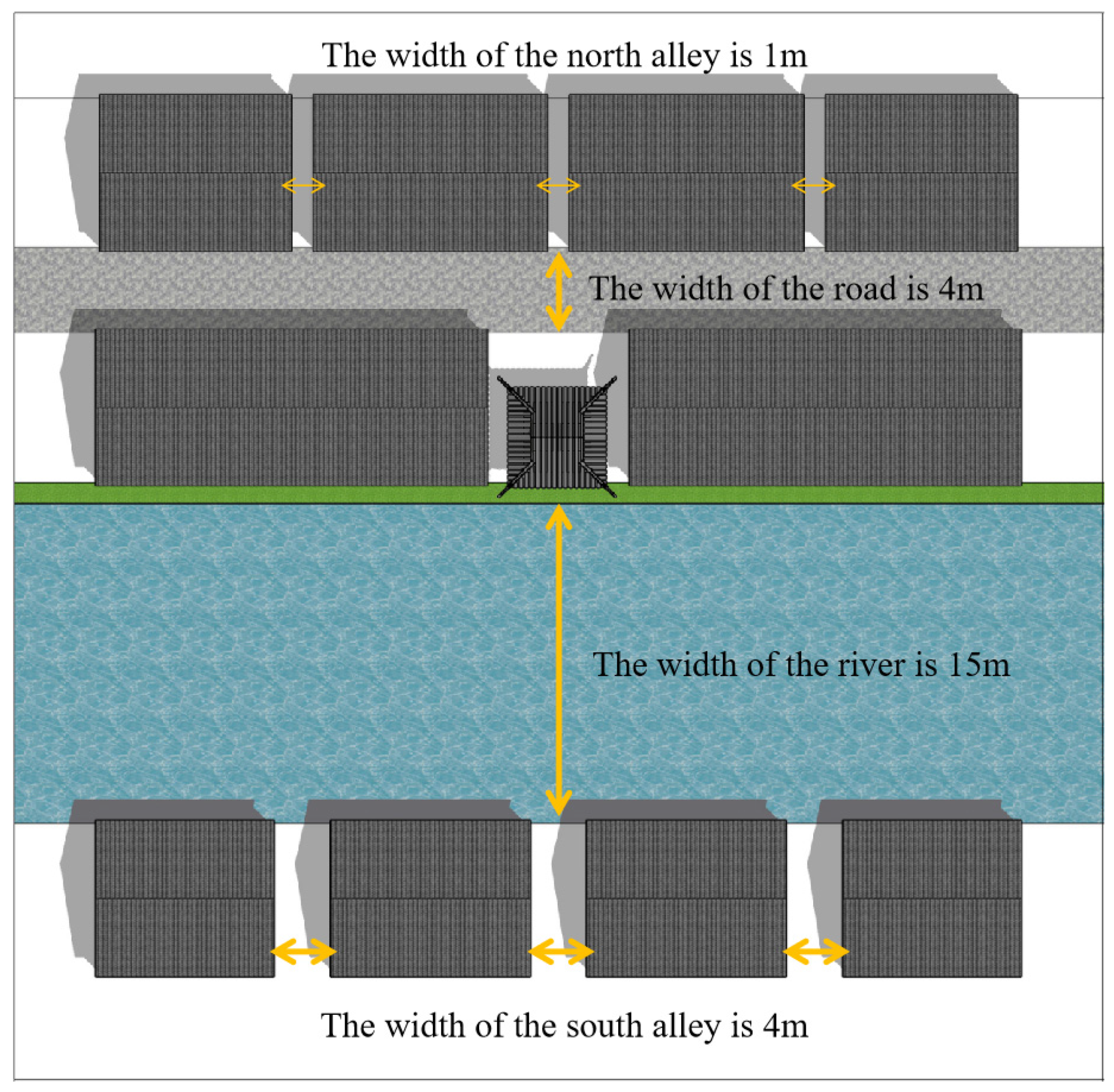
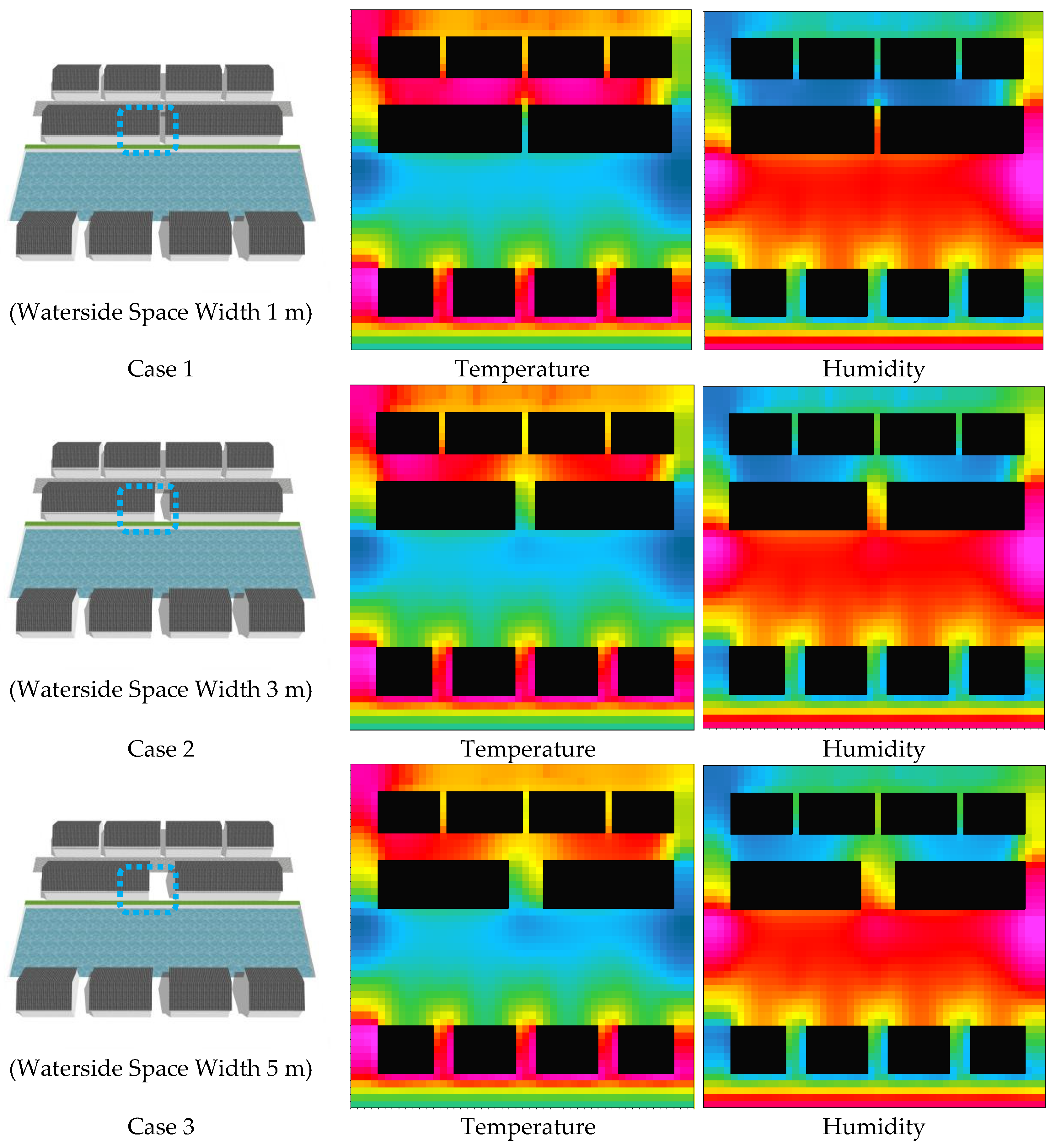

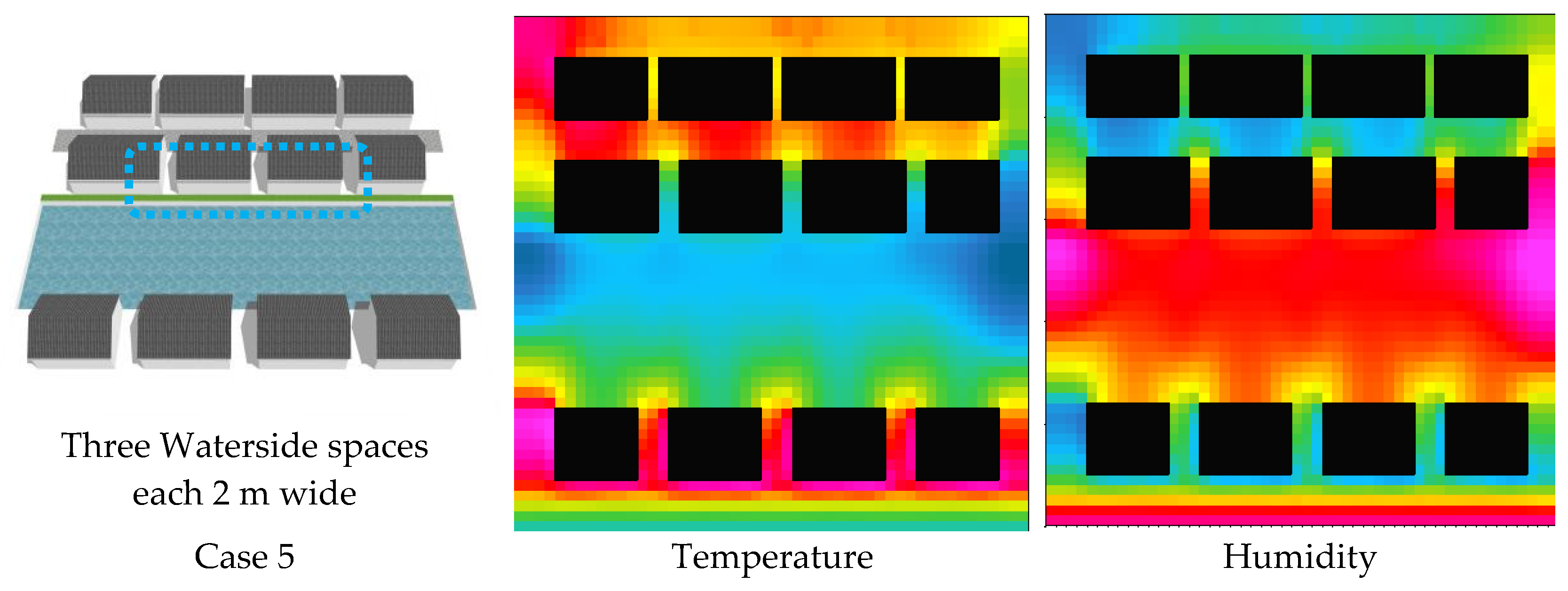

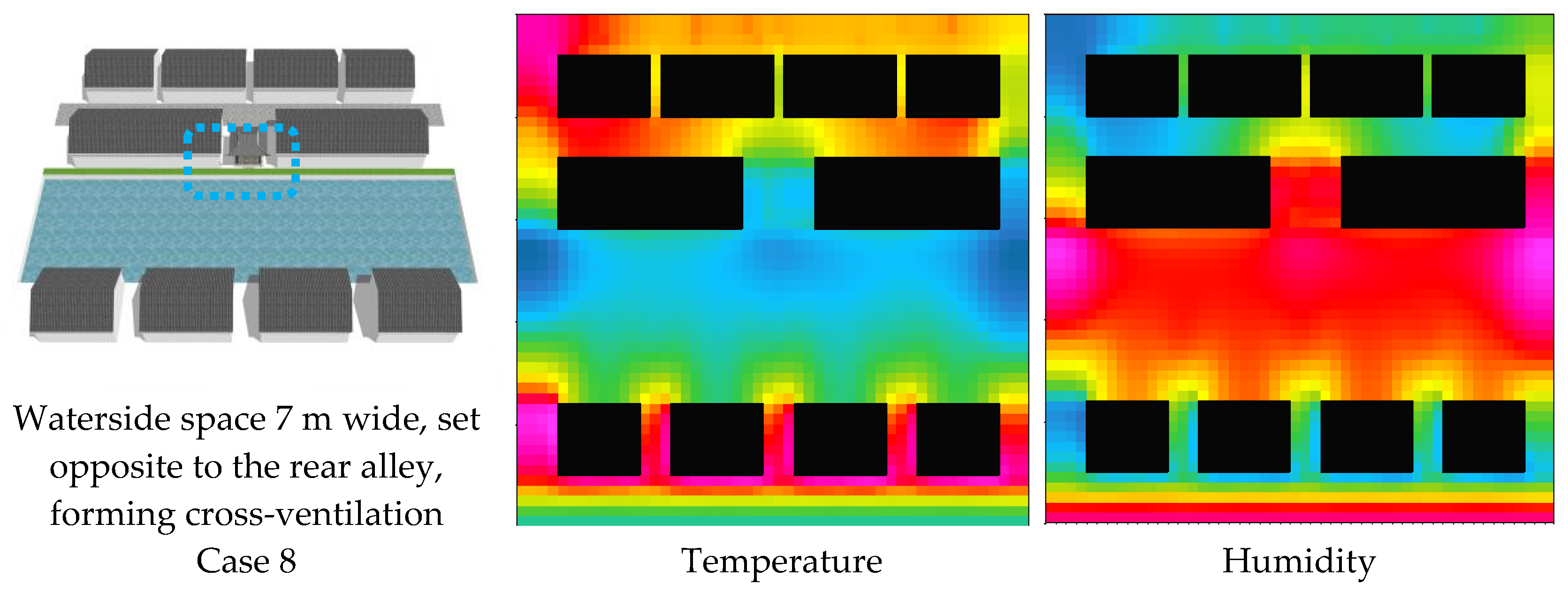

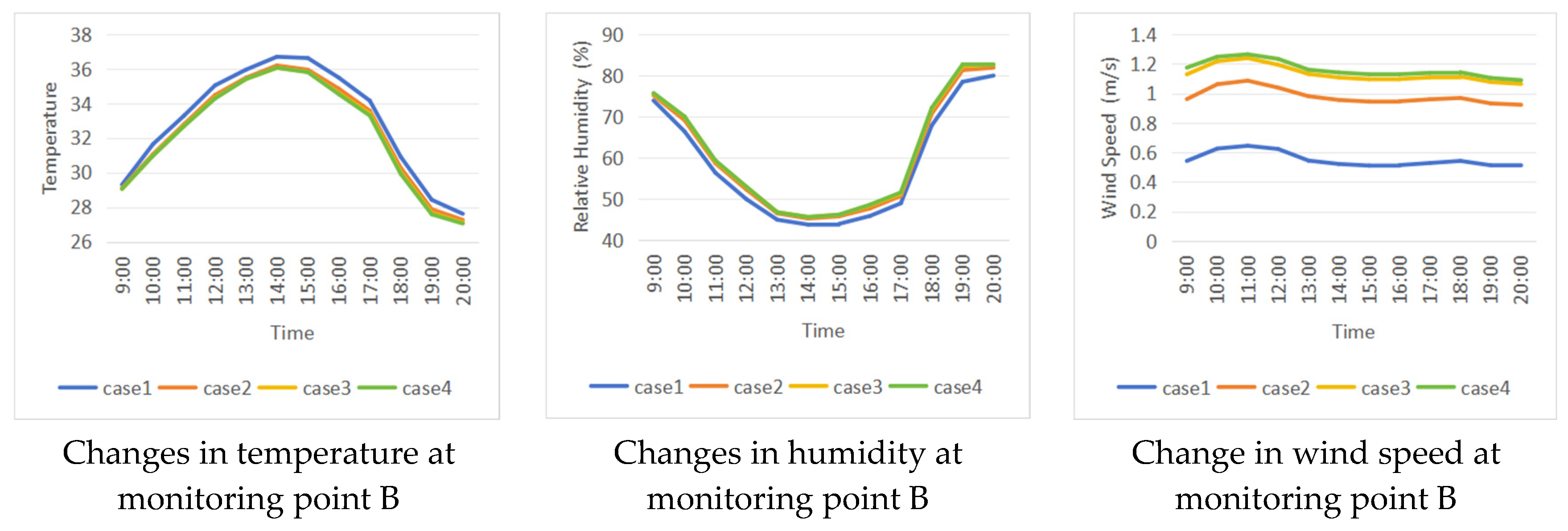

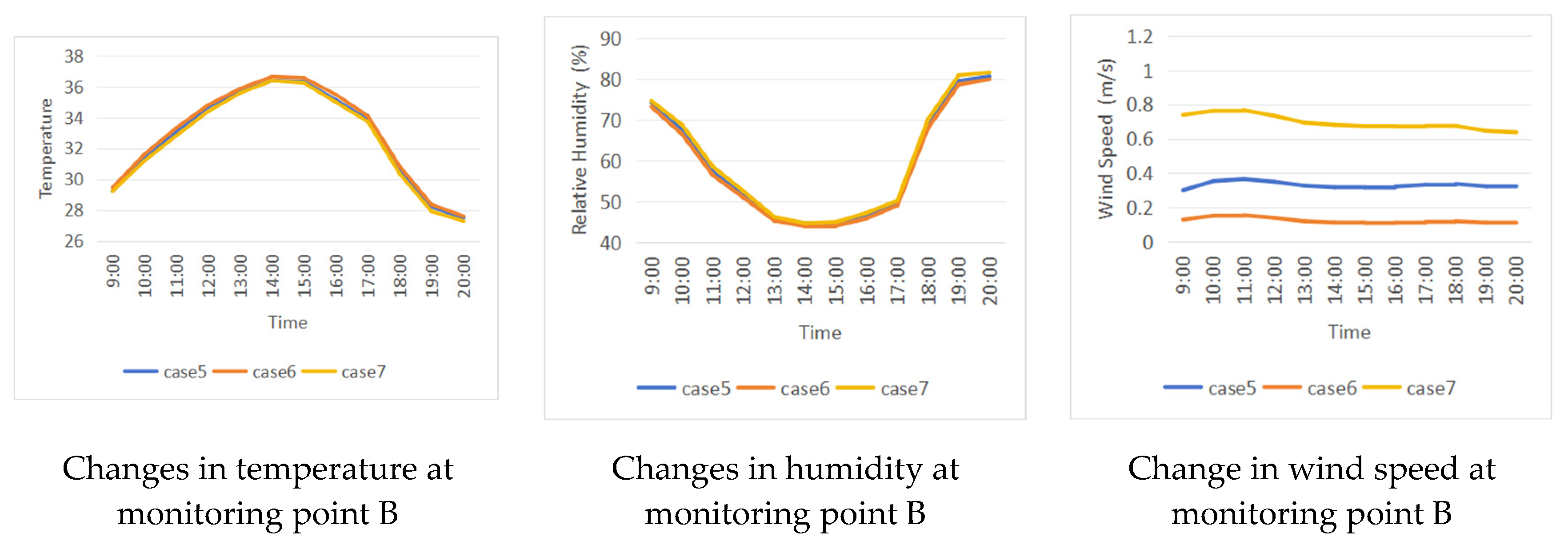


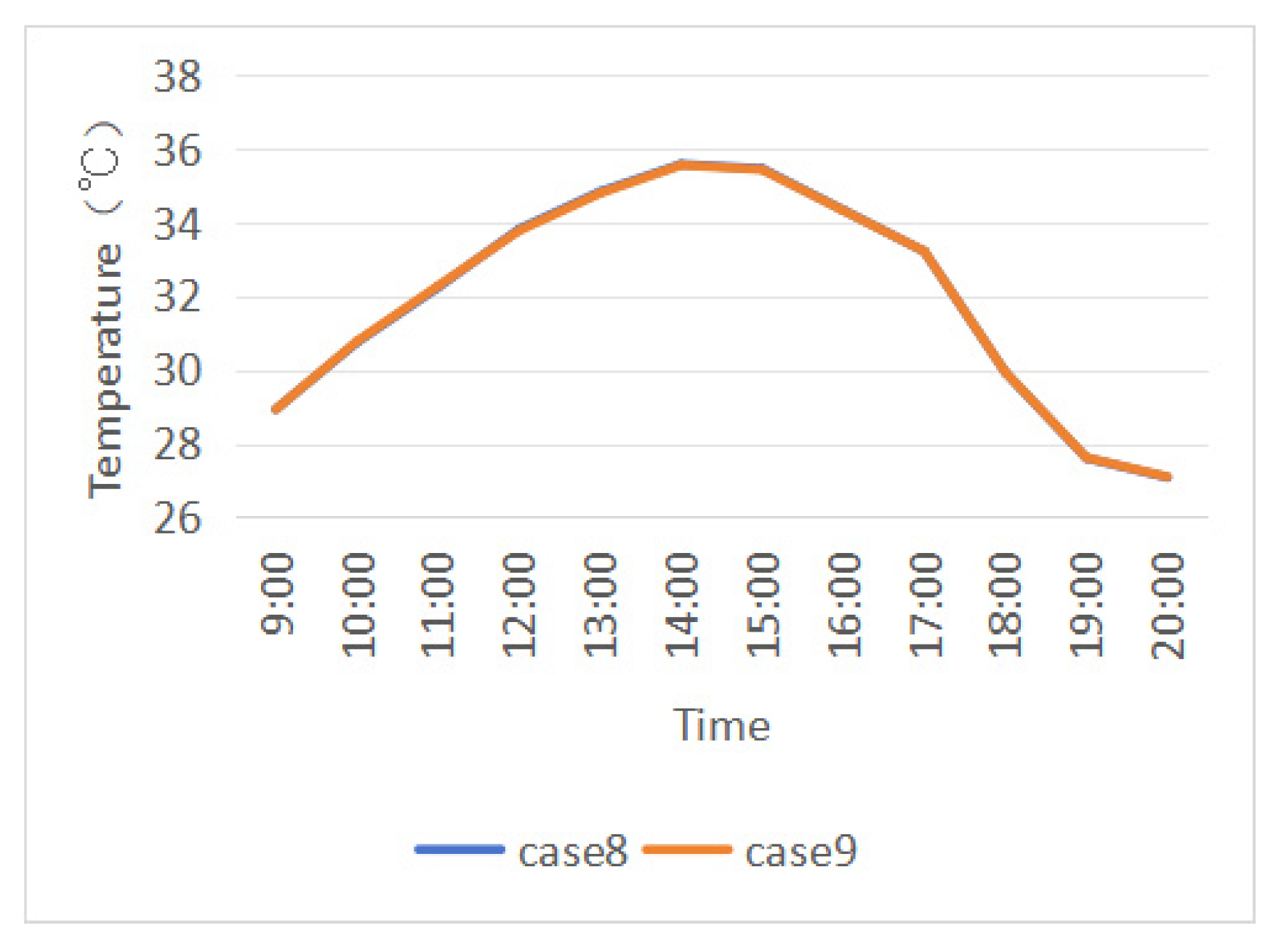
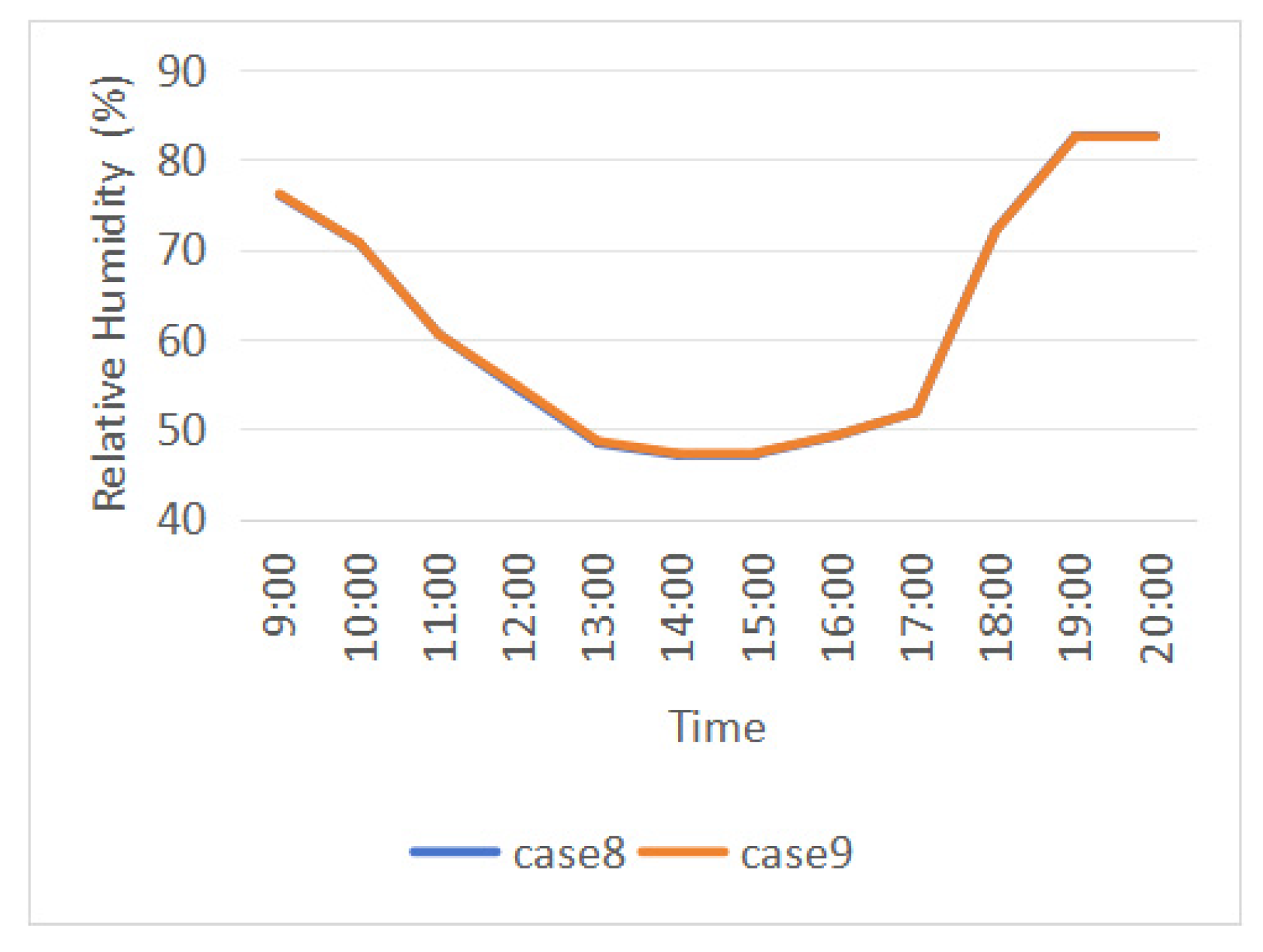

| Content of the Study | Relevant Scholars | Shortcomings |
|---|---|---|
| Urban thermal environment research | Soflaei, F. (2016) [10]; Macintyre (2021) [6]; Teshnehdel, S. (2022) [7]; Yu, H. (2023) [8]; Cheng, Y. (2023) [9]; Chiu, Y. (2023) [11] | A large number of studies have focused on urban public spaces, with fewer studies on landscape thermal environments. |
| Thermal environment research in tourist attractions | Hamilton and Tol (2007) [14]; Lin and Matzarakis (2008) [12]; Wang et al. (2010) [13]; Scott et al. (2007) [15];Nasrollahi, N. (2017) [16] | With the development of culture and the tourism industry, the research on the thermal environment of scenic spots needs to be strengthened. Currently, there are fewer studies on the thermal environments of ancient towns in Jiangnan water towns. |
| Thermal environment study of hydrophilic space in historical neighborhoods of ancient towns | Yan, H. (2014) [23]; Morakinyo, T.E. (2016) [24]; Jamei, E. (2016) [22];Salata, F. (2016) [28]; Nasrollahi, N. (2017) [16]; Ma, K. (2019) [21];Lai, D. (2019) [27]; Espín-Sánchez, D. (2023) [26]; | Currently, there are more studies on the thermal environmental texture of hydrophilic spaces, but there are fewer studies on the hydrophilic spaces of ancient towns and historic districts. Jiangnan water towns have a unique subsurface, and the study of their thermal environment is of great significance. |
| KAN-WS01 Handheld Meteorological Monitoring Instrument Meteorological Parameters | ||||
|---|---|---|---|---|
| Measurement Elements | Measuring Range | Accuracy | Resolution Ratio | Unit |
| Wind speed | 0~40 | ±0.3 | 0.1 | m/s |
| Atmospheric temperature | −20~50 | ±0.3 | 0.1 | °C |
| Relative humidity | 0~100% | ±3% | 0.1 | %RH |
| Atmospheric pressure | 300~1100 | ±0.3 | 0.1 | hPa |
| Category | Simulation Parameters | Values Used |
|---|---|---|
| Simulation Parameters | Date | 24 July 2023 |
| Time | 9:00–18:00 | |
| Total Time | 10 h | |
| Boundary Condition | Simple Forcing | |
| Wind Speed at 10 m | 2.7 m/s (summer) | |
| Wind Direction | 202.5 (summer) | |
| Material Setting | Roughness Length | 0.01 |
| Initial Air Temperature | Weather Station Data | |
| Initial Relative Humidity | Weather Station Data | |
| Buildings | The Albedo of Walls for Buildings: 0.3 | |
| Absorption of Roof Tiles: 0.5 | ||
| Pavements | The Albedo of Gray Granite Pavement: 0.6 |
Disclaimer/Publisher’s Note: The statements, opinions and data contained in all publications are solely those of the individual author(s) and contributor(s) and not of MDPI and/or the editor(s). MDPI and/or the editor(s) disclaim responsibility for any injury to people or property resulting from any ideas, methods, instructions or products referred to in the content. |
© 2025 by the authors. Licensee MDPI, Basel, Switzerland. This article is an open access article distributed under the terms and conditions of the Creative Commons Attribution (CC BY) license (https://creativecommons.org/licenses/by/4.0/).
Share and Cite
Jin, W.; Fukuda, H. Strategies for Enhancing the Thermal Environment of Street Spaces in Ancient Canal Towns Based on the Design of Water-Friendly Spatial Diversity. Sustainability 2025, 17, 3112. https://doi.org/10.3390/su17073112
Jin W, Fukuda H. Strategies for Enhancing the Thermal Environment of Street Spaces in Ancient Canal Towns Based on the Design of Water-Friendly Spatial Diversity. Sustainability. 2025; 17(7):3112. https://doi.org/10.3390/su17073112
Chicago/Turabian StyleJin, Wu, and Hiroatsu Fukuda. 2025. "Strategies for Enhancing the Thermal Environment of Street Spaces in Ancient Canal Towns Based on the Design of Water-Friendly Spatial Diversity" Sustainability 17, no. 7: 3112. https://doi.org/10.3390/su17073112
APA StyleJin, W., & Fukuda, H. (2025). Strategies for Enhancing the Thermal Environment of Street Spaces in Ancient Canal Towns Based on the Design of Water-Friendly Spatial Diversity. Sustainability, 17(7), 3112. https://doi.org/10.3390/su17073112






